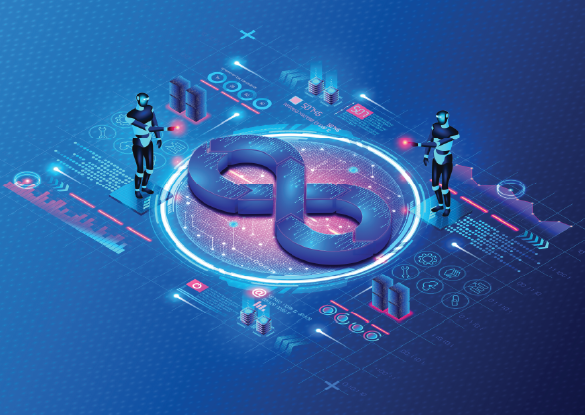Filter by topic
Commercial Operations
Sales and Marketing
Blog
PMSA
Pharma Analytics
Advanced Analytics
News And Events
Pharmaceuticals
Analytics
Awards
Industry
Artificial Intelligence
Machine Learning
COVID-19
Sales Operations
Events
HEOR
Announcements
Life Sciences
Buzzwords
Featured
Incentive compensation
Omnichannel Marketing
Pharma
Pharma Marketing
SalesIQ
marketing analytics
Data and Technology
Omnichannel
Rare Diseases
Data Management
Digital Transformation
Pharma Marketing Analytics
Press Release
Sales Strategy
AI
AI and Machine Learning
Data Analytics
News Publishing
Sales Strategy & Operations
Sales force effectiveness
AIML
Commercial Model Design
HEOR Analytics
Insights
Pharma Commercial Analytics
Pharma Companies
Pharma Sales
Risk
Segmentation & Targeting
commercial excellence
Big Data
Call planning
Information Management
Managed Market Operations
Managed MarketsIQ
Medical Devices
PMSA 2018
Veeva
Axtria Culture
Brand Analytics
Cloud Data Management
Data Governance
Dreamforce
Healthcare Industry
Multi-Channel Marketing
Omnichannel Customer Engagement
PMSA 2017
Sales Force Sizing
Strategy & Operations
Targeting
ANNUAL CONFERENCE
Animal Health
BFSI
Commercial Analytics
Commercial Data Management
Customer Engagement
Customer Targeting
Data Strategy
Digital Marketing
Drug Price Controls
E-Commerce
Gartner Magic Quandrant
Healthcare Professional
Life Sciences Industry
Managed Care
Managed Care Organizations
Managed Market
Marketing Effectiveness
Medical Device
Medicare
Orphan Drug
PMSA 2015
PMSA 2019
Pharma Commercial Model Design
Predictive Analytics
Promotion Channels
RWE
Retail
SFSS
Sales Effectiveness
Sales Force Size & Structure
Sales Management
Sales performance
Social Media
Territory Alignment
#WFH
AI/ML
Automation
Axtria SalesIQ
Biopharma
Business Intelligence
Clinical Data Management
Cloud Products
Contracts
Coronavirus
Customer Centricity
Customer Segmentation
Data Science
Digital Technology
Drug Awareness
Health Economics
Health Insurance
Healthcare Organizations
Inspiring Stories
Key Opinion Leader
Life Science
MM Blog Series
MMX
Managed Market Analytics
Market Access
Marketing Mix
Marketing Mix Modeling
Marketing Mix Strategy
Master Data Management
Med Device
MedTech
Media
Miscellaneous
NBAs
New Normal
PMSA 2016
Patient Adherence
Patient Data analytics
Patient Outcomes
Pharma Forecasting
Pharma Industry
Pharma Supply Chain and COVID-19
Predictive Intelligence
Promotion Response Modeling
Rare Disease
Real Time Data
Real-World Evidence
Sales Analytics
Sales Force
Sales Force Strategy
Sales Targeting
Sales force design
Small and Medium Business
Solutions
Value & Outcomes Based Pharma Commercial Modeling
Winter Symposium
Work From Heart
biopharmaceutical
business processes
sales forecasting
veeva 2017
2018
2020 Presidential Election
2020 Senate and House Elections
4th Industrial Revolution
ACO
AI Applications
AI ML Trends
AI Technologies
AI Technology
AI-powered intelligence
AIFFE
AIops
APLD
Account Manager
Account Planning
Actionable Insights
Adjusted Baseline
Advertising
Agentic AI
Analytical Medical Devices
Analytics Solutions
Animal Disease
Animal Health Analytics
Animal Health Data
Animal Health Pharmaceutical Sales
Animal Health Sales Rep
Animal Medicine
Augmented Intelligence
AutoML
Axtria CustomerIQ
BackToOffice
Baseline Sales Estimations
Baselines Adjustment Methodologies
Benchmarking
Big Data Analytics
Big Data Framework
Biopharma Companies
Books
Brand Adoption
Brand Equity
Brand Forecasting
Business Functions
CDMS
CEO Message
CIO
COVID-19 Animal Health Industry Effects
COVID-19 Pharma Industry Effects
COVID-19 Recession Pharma Industry Effects
CRM
CRM Suggestions
Care Organization
Celebration
Cell Therapy
Change Management
Channel effectiveness
Channel mix modeling
Claims
Clinical Data Journey
Clinical Data Science
Clinical Study Process
Clinical Trial Optimization
Clinical Trials
Clinical trial outcomes
Clinical trials Operations
Cloud Computing
Cloud MDM
Commercial Model
Commercial Strategy
Commercialization
Contracting
Crain's Fast 50
Customer Experience
Customer Retention
Customer Valuation
Customer-Centric Marketing (CCM)
Data Driven Decision Making
Data Driven Decisions
Data Integration
Data Lakes
Data Quality
Datasets
Deals
Decentralized Clinical Trials











